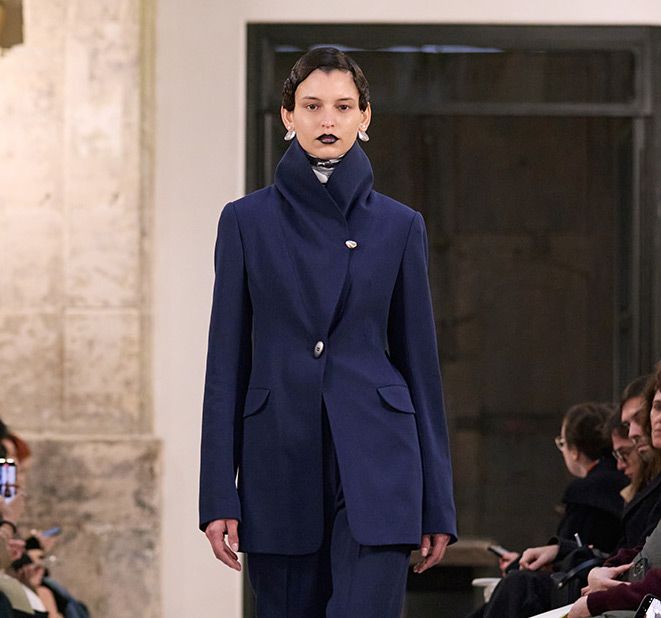Japanese designer Mame Kuroguchi continues her exploration of traditional forms in her elegant FW25 collection.
By Jesse Scott
Mame Kuroguchi's profoundly nuanced and unfailingly intellectual collections comprise a cohesive narrative carefully unfolded season after season as the Japanese designer pens a love letter to her home country and its traditions. Each Kuroguchi piece seems a work of both art and architecture, the details carefully considered and exquisitely sculpted to tell a particular story while defining a new sphere of deliberate, slow fashion.
The Spring-Summer 2025 collection, entitled Katachi, saw Kuroguchi embark on an in-depth exploration of the 1978 book Nihon no Katachi ("shapes in Japan"). Kuroguchi translated the shape of "found objects," such as pebbles and seashells, into inherently minimalist yet deceptively complex designs with a particular feminine grace. For the Autumn-Winter 2025 collection, also entitled Katachi, Kuroguchi continued and expanded her exploration, this time focusing on the traditional lacquerware found within Nihon no Katachi's pages.
Lacquerware Inspires Luxurious Color Palette
The first look, a crimson coat with an asymmetrical closure, conversed with last season while establishing some defining features of the new collection. The coat enveloped the model like an embrace. Sharply tailored, it referenced lacquerware in both color and shape. The wide collar, which would recur throughout the collection, was reminiscent of the seashells so inspiring to Kuroguchi. One of the "serendipitous forms" alluded to in the show notes, it lent harmony and warm femininity to each look on which it appeared. In true Kuroguchi fashion, the forms were seemingly effortless yet in fact a labour of love; the designer personally created paper-cuts of each silhouette before interpreting them in textile form.
Sumptuous shades of crimson, scarlet, and midnight blue, inspired by the perfectly preserved lacquerware in Nihon no Katachi, were discerningly used throughout the collection for a touch of seduction and aristocracy (seen prominently in Looks 4, 28, and 12). Achingly supple sweaters, jackets, and dresses were particularly memorable, with colour gradient cuffs adding both ceremony and strikingly contemporary sensibility (Looks 24, 26, 27). Meanwhile, billowing down coats, evoking cotton candy clouds and smooth sea-kissed pebbles, introduced new elegance to a type of garment that generally emphasizes function over femininity (Looks 34, 38).
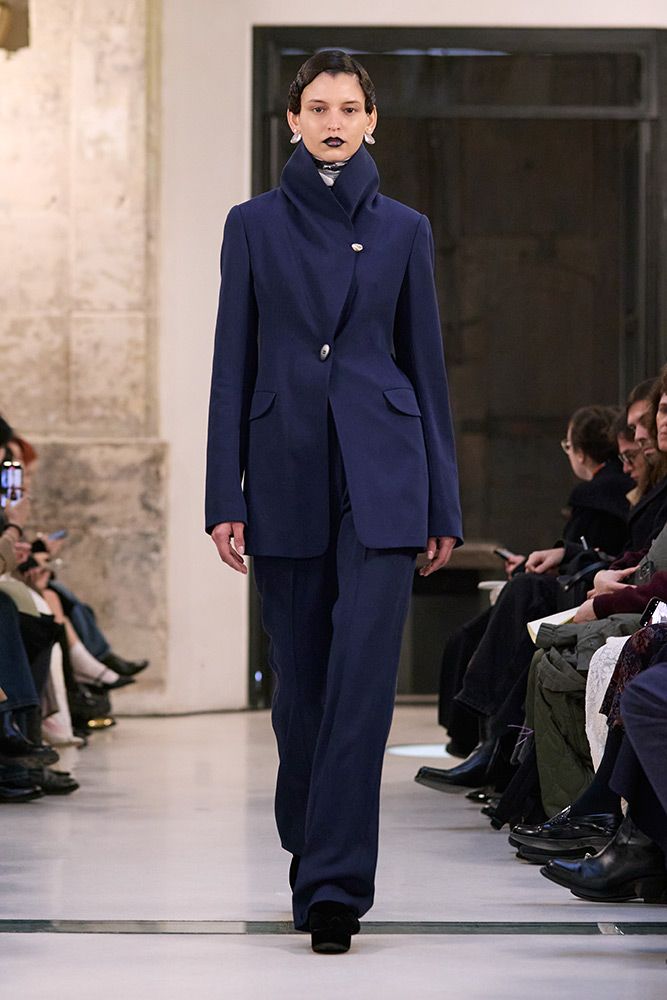
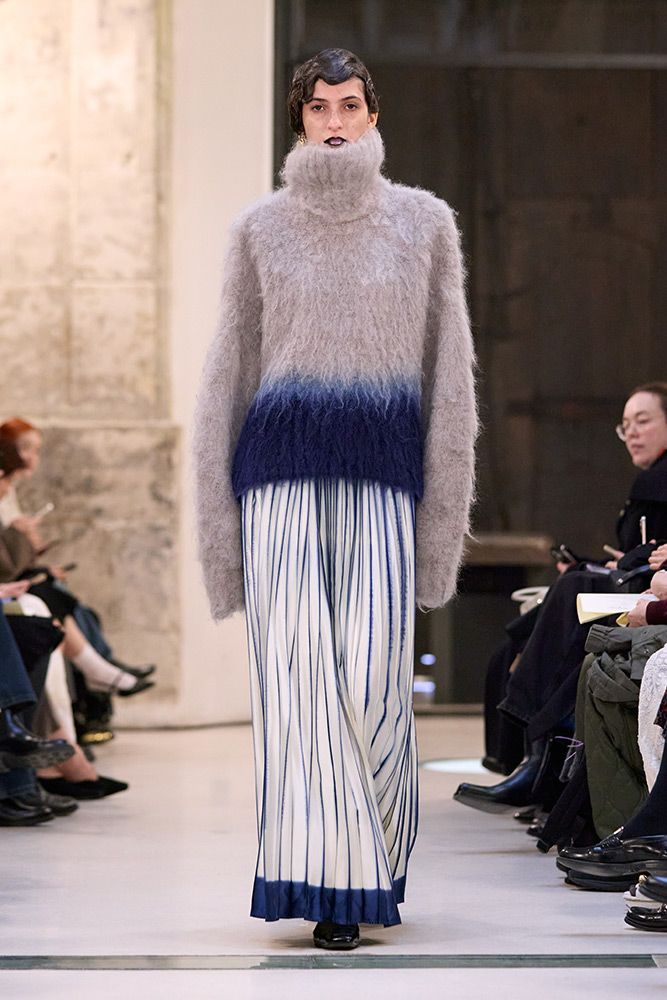

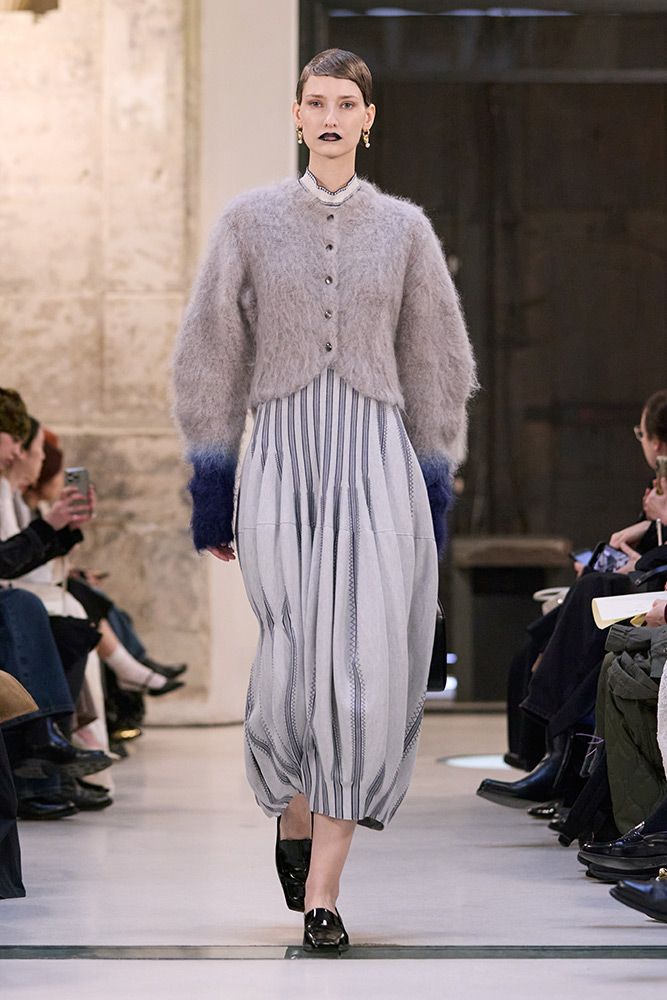

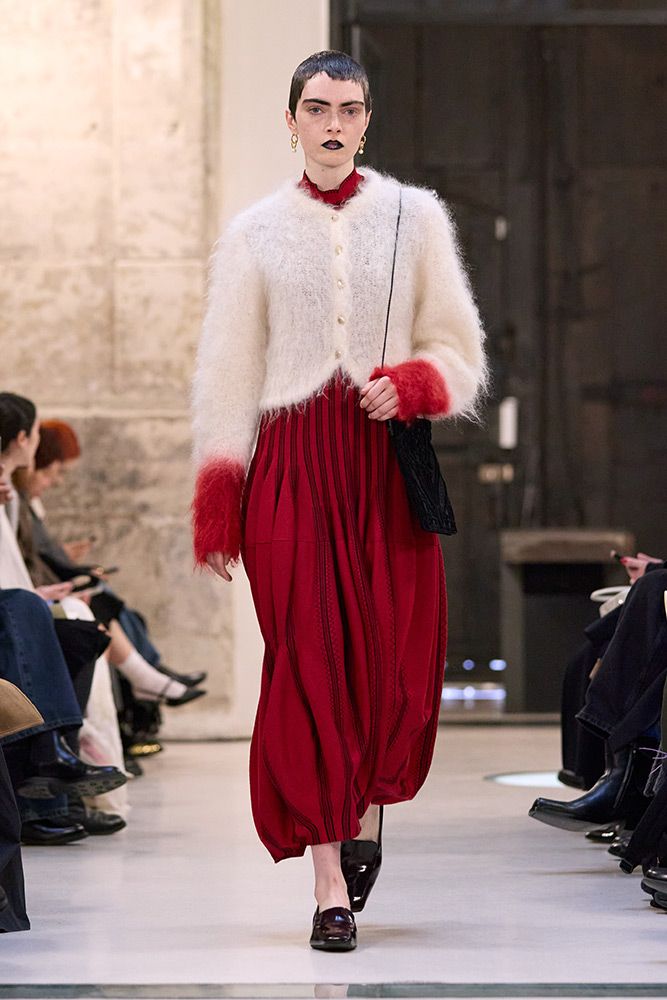
This season saw Kuroguchi introduce guests to the ancient Japanese art of Suminagashi. A delicate marbling technique by which ink is floated on water to create undulating, fluid patterns, Suminagashi was the reference point for ethereal dresses and a subtly yet voluminously ruffled top (Looks 30, 32). Kuroguchi also continued her conversation with Japanese paper lanterns, referenced by a covetous knit dress with flowing sleeves. There was irresistible romance in the collection's tributes to Japanese heritage but no romanticization - Kuroguchi takes a scientific and profoundly historically respectful approach when translating traditional motifs into modern garments.
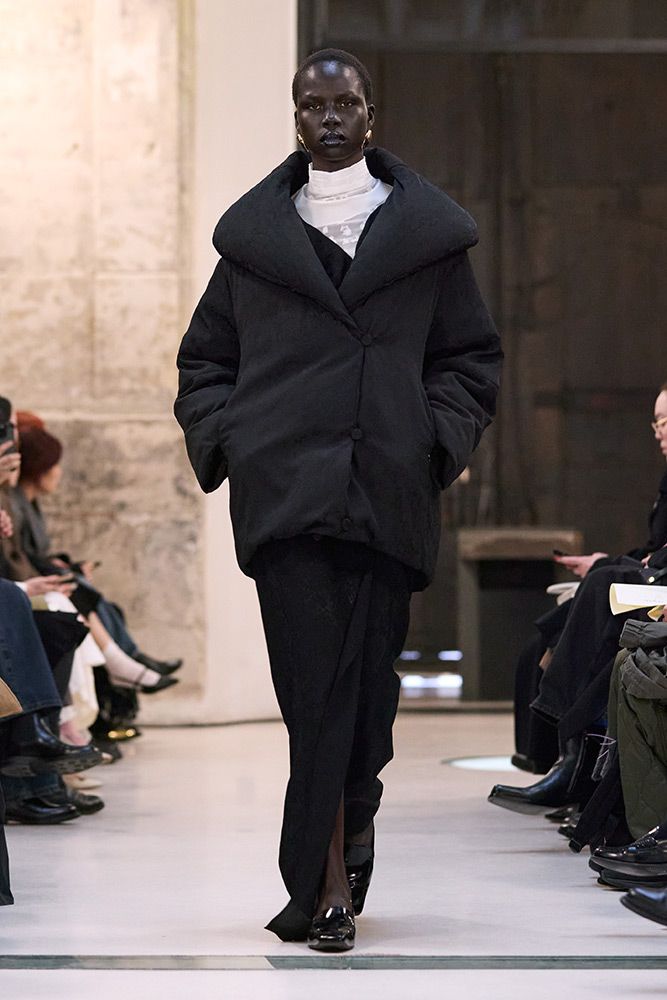
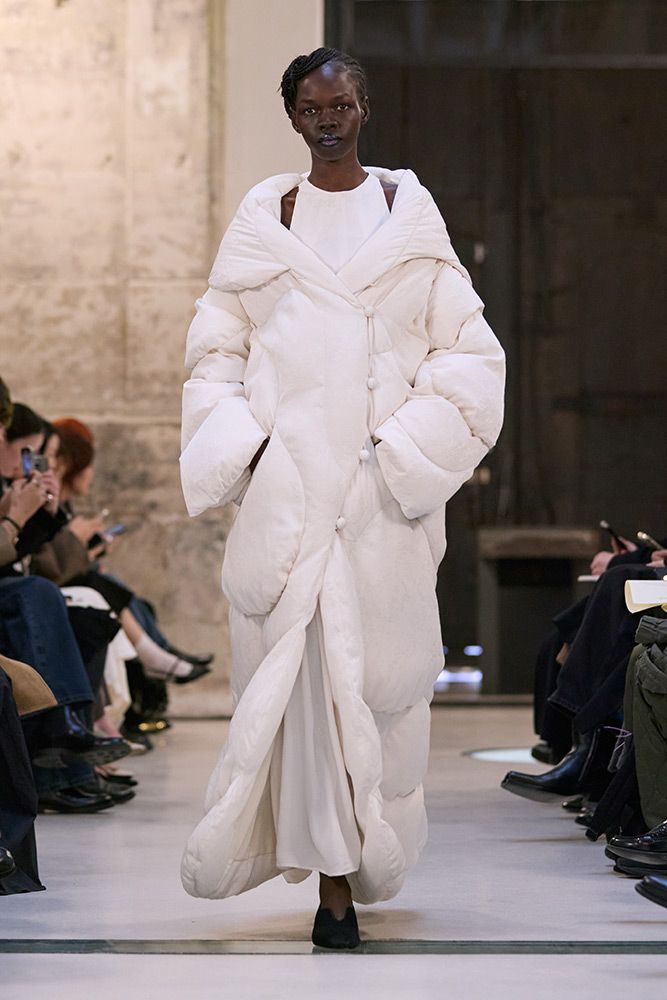
A Special Synthesis of Stability and Ephemerality
Fluidity and permanence, seemingly contrasting concepts, are united in Kuroguchi's artistry. Each silhouette flows with a delicate symmetry, seductively ephemeral, but like a centuries-old river that rises and falls with the season, possessed of a constant soothing rhythm. The forms of Japan, whether naturally existent or hand-crafted, existed long before Kuroguchi's time and will remain long afterwards. Kuroguchi's loving distillation of them, into wearable time capsules which capture the essence of national traditions and epitomize the harmony within enduring yet ever-evolving communities, is a process our generation is blessed to witness.
